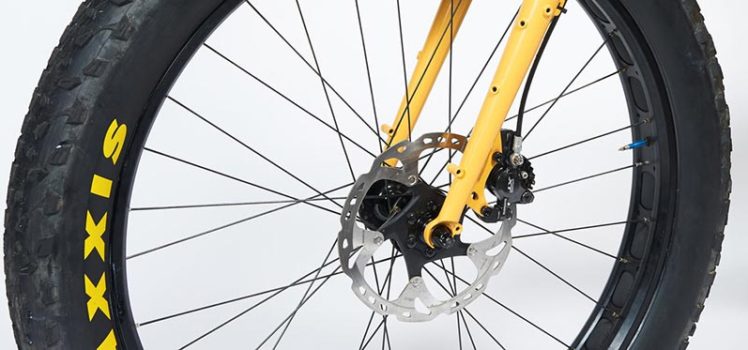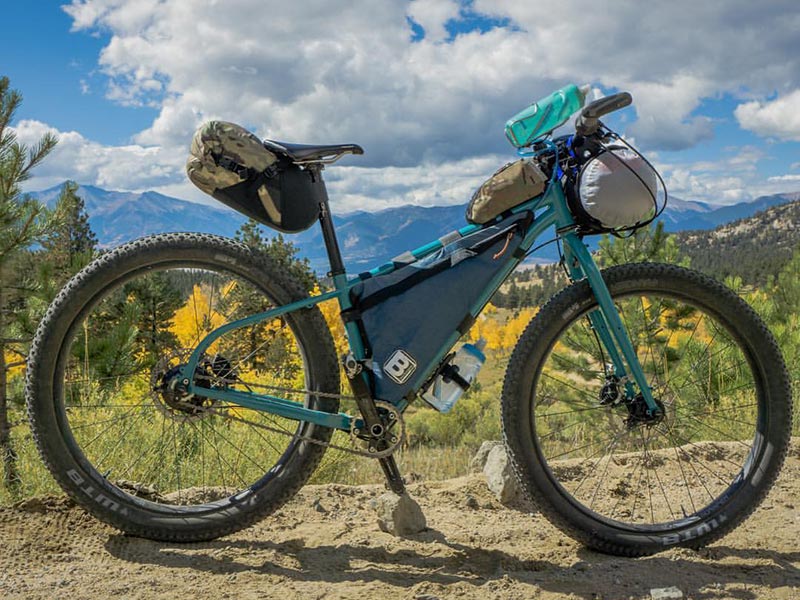Who would have thought that wheels would be so important?

If you had asked me one year ago what the most important part of a bike is, I don’t know how I would have responded. I’m pretty sure that I wouldn’t have said wheels though. If there is one thing that I’ve learned from all the reading that I’ve done on bicycle touring, it’s that wheels are important. Very important, in fact! And what size of wheels to use has been the one thing that we have deliberated on more than anything else.

Obviously the components of a bike all work together to make it function. And the build of a bike seemingly begins with the frame. What I’ve noted though is that the one problem that seems to leave those touring by bike stationary, or hitchhiking, is a wheel failure. Which brings us to the decision about what size wheels to use.
From what we have read, it seems that the world standard for wheel size is 26 inches. In theory, you can walk into any third-world hardware store and pick up a 26″ bike rim to replace one that has become damaged. For this reason, those touring on bikes have been strongly encouraged to ride a bike built on 26″ wheels. Things may be changing though.
So many choices!
In addition to 26″, there are now several other wheel sizes that are common for mountain bikes:
- 29″
- 29+ (a wider 29″ rim with a 3″ tire)
- 27.5+ (a wide 27.5″ rim with a 3″ tire, giving it the same outside diameter as a standard 29er)
Cass Gilbert describes the pros and cons of each of these options in this article.
The other day we received an email from Daniel, the founder of Tumbleweed Bicycles, and the person who’ll be building our bikes, letting us know that he was finalizing the details, and asking what wheel size we had decided on. Knowing the type of touring that we’re hoping to do, in our minds, it was really a choice between two options: 29+ and 27.5+. Based upon what we have read, and info from the couple of people that we have spoken to, we ultimately decided on the latter. How will that work out for us? Time will tell.
What happens if we have a wheel failure in Central or South America? Without 26″ wheels, we won’t be able to buy a replacement. From everything we have read, even though cheap rims may be available in hardware stores, it seems that just about every account of a wheel failure that we have read about has been solved by having a good replacement sent in by courier. In other words, it’s a good excuse to take a short break from riding. 🙂

Daniel on a Prospector prototype. Photo by Cass Gilbert.




Excellent choice for wheels!
I’m waiting for folks with some experience to yell, “You made the wrong choice!”
🙂
The fat tire is the way to go. I assume he recommended that you guys run tubeless (Tubliss!) too?
Yes, Tubeless.
I’ve got some experience with many sizes on a number of types of bikes and you made the right choice! IMHO. As already pointed out, Tubeless is the way to go as well.
I like when I make the right choice. Quite often I don’t! 🙂
I think that’s a solid choice Mike. Especially going with the 3″ width instead of 4″. My fat bike has the 4″ width and the gyro self-steer effect can get pretty annoying at any kind of speed. I ride a 26″ trail bike with tubeless tires. I injured myself last summer coming down a mountain where my tubeless decided to become tireless as well. Just make sure you have tire beads that seat very well with your rims. I think if you went with the 29+ with big tires you would suffer with less maneuverability on the trails.
Thanks, Javan. Sorry to hear about your mishap. We’re going to be using WTB Scraper rims which I understand are tubeless ready.
Yeah, mine are tubeless rims but the tires didn’t seat tightly enough I guess?
Stuff happens! 🙂
Just curious, were you running them with very low pressure?
No, I was running about 30 psi. I found after researching a bit that the tubeless tires I used tended to run a little loose at the bead. Quite a few people had lost their front tire going around a turn at speed using them. It’s amazing how quick you’re tasting dirt when the front tire comes off like that!
I hope I don’t find that out the hard way!
1. Wheels
2. Shoes
3. Handle bars and gloves
4. Seat
5. Everything else
For sailing, I’m picky about gloves. Rock climbing, it’s the shoes; I found a pair I liked 15 years ago and I keep buying the same ones. Ice climbing I am quite fussy about ice axes and crampons, but less so about the rope, anchors, and clothes.
It comes down to the contact points with the world and with you.
We’re going to be running platform pedals (gasp!) so we should have a lot better selection of shoes than those who are clipping in.
I’m curious why you plan to run platforms? I can appreciate their simplicity and robustness, but you give up so much muscle engagement. Being able to pull up, pull back and push forward is a lifesaver, and the pedals rarely break. I run two sided models with clips on one side, platforms on the other. Best of both worlds. My shoes are like sneakers, with recessed clips. Easy to walk in, but allow total engagement with the pedal. I’m sure you’re aware of all these options, so why give up the benefits?
Why? Neither of us have EVER clipped in. That, in and of itself, is a good enough reason. That said, many people who are bikepcking are running platform pedals these days. We’re definitely not the only crazy ones.
Check this out:
http://www.bikepacking.com/gear/flat-pedals-for-touring-bikepacking/
It really does make a HUGE difference being clipped in. Especially on long rides and hill climbing. I understand your reservations but would really recommend trying them. It makes your work so much more efficient. I’ve been riding for a few years clipped in on technical trails and have only fallen once because of them. And that was only due to a loose cleat on one of my shoes (I use Loctite now). It’s really pretty easy to get used to after a few rides.
I understand that many people believe that, but in spite of those assertions, many people are switching (back?) to platforms for touring/bikepacking. I have no personal experience with this, but have done nothing but read about it for the past 8 months or more. I guess we’ll see.
I rode for many years on platform pedals and still use them for downhill runs with jumps and where there is a high possibility of carnage. But since I switched to clipless for most riding, it’s been a world of difference. I think some of the reasoning in the link you provided is valid but the benefits (for me) definitely outweigh anything they point out. On some of our trails that climb up mountainsides, I went from having to stop a few times to recover, to cranking up in one shot without my heart and lungs being ready to explode. They also really help when you need a burst to get up short steeps or over root masses, etc.
I have a hard time getting my mind around the “pulling up with your leg” thing, which I assume is the whole point. It hurts my knee thinking about it.
Yeah, that’s what gives you the advantage on the climbs. It’s physical therapy Mike!
Actually, after my wife had knee surgery, they said riding her bike would be about the best exercise for recovery. It’s a little weird at first but becomes second nature quickly.
Maybe I’ll try it on someone else’s bike. 🙂
Gah! I just wrote a lengthy reply but screwed up the post so it got deleted. Lesson learned.
Abridged version:
I don’t have a horse in this race, so whatever works for you is great. That said, I have many thousands of miles in the saddle on every kind of bike and riding surface. Since you seem to be a man who appreciates informed analysis, I’ll continue…
There is a steep learning curve with clipless pedals. You WILL fall at least once before you get the hang of unclipping. This is a small price to pay for the ability to use more of your muscles for motive force. During long climbs with fully-loaded bikes it is very useful to engage different muscle groups. With flat pedals you can really only exert force on the downstroke, whereas clipless pedals give you the ability to pull back, pull up and push forward as well. This is a good thing.
As for the article, it may be that technology has narrowed the gap between platforms and clipless. I’ll have to give them a try to know. The rest of the article, however, is sufficiently silly that it detracts from any meaningful point.
How does a clipless pedal differ from a platform when pushing a bike up a hill? Answer: it doesn’t, except that a platform usually has sharper cleats that are more likely to gouge your shins when you hit them. Silly.
The riding style part is the most obnoxious. I promise that gravity, body english and mechanics are the driving forces regardless of pedal choice. The techniques are different, but there is no loss of connection to the bike, trail or experience by using clipless pedals. This entire paragraph smacks of the kind of marketing BS that has brought us designer logging boots and artisanal firewood.
Regardless of what equipment you choose, I am excited for this new phase of your adventure and look forward to following along.
Sorry that your initial post didn’t work out. I hate when that happens!
As I have no experience, I’m not going to attempt to debate any of the things that you’ve said. We have already decided to at least begin with platform pedals, right or wrong. With so much to learn, I’d prefer not to complicate things further by making my falling off the bike a guaranteed thing. But while we’re on the subject though, since we’re going to be needing some new footwear, do you have a line on those designer logging boots that you mentioned? They might work well with the platform pedals. 😉